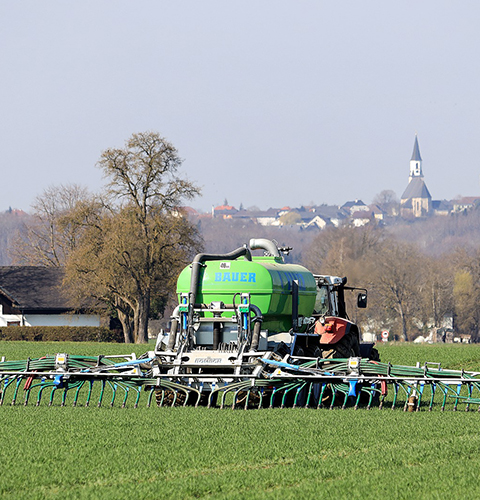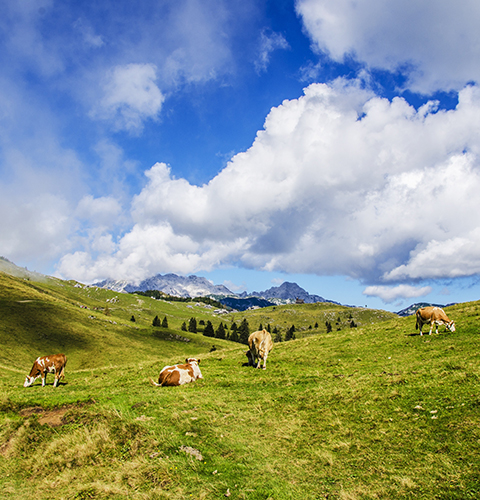Clean Farming
The revolutionary process for reducing ammonia and methane emissions from livestock.
The revolutionary process for reducing ammonia and methane emissions from livestock.
More than 93% of all ammonia and 50% of all methane emissions originate in agriculture.
They are mainly produced in the barn, during manure storage and spreading.
These two substances are not only harmful to our environment, they are also the cause of several thousand premature deaths each year.
To minimize this risk, the EU has included both pollutants in the NEC Directive and requires a phased reduction.
Ammonia is a precursor to the dangerous particulate matter that causes more than 400,000 premature deaths in the EU each year.
Methane is a greenhouse gas with a global warming potential 28 times higher than CO2, as well as a precursor in the formation of ground-level ozone.
With the Clean Farming process we have developed a procedure, which by means of plasma technology:


Significantly reduces nitrogen losses due to ammonia & nitrate emissions


Prevents greenhouse gas emissions and the formation of harmful particulate matter


Increases acceptance for agriculture
We use our plasma technology to produce Acidic Nitrate Liquid (ANL) from renewable energy and air.
The ANL produced on site is used to acidify the resulting manure to bind ammonia (NH3). In addition, methanation (CH4) is prevented during slurry storage and application.
This prevents the generation of ammonia and methane emissions!
In an air scrubber, water is mixed with ANL and the ammonia-containing stable air passed over the scrubber is cleaned and the ammonia is bound. The resulting liquid containing ammonium nitrate is separated and fed to the slurry storage.
ANL air scrubbers additionally sterilize the stable air and make it odorless.
Immediately after collection of the raw slurry, it is acidified by ANL.
After separation, the pH in the slurry pit is maintained at this level until application by post-dosing ANL to bind ammonia and prevent methanation during slurry storage and application.
In existing biogas plants, the liquid digestate is acidified using ANL.
This produces odorless and ammonium nitrate-containing fertilizer.
Ammonia
Methane
Discover the benefits of our solution at a glance:
Our process reduces emissions from agriculture by up to 100%.
We help to comply with the EU’s NEC directive and avoid potential penalties.
In addition to reducing methane and ammonia, our cycle also prevents the generation of CO2.
Enrichment of manure using our ANL creates an effective farm fertilizer, reducing the need for additional artificial fertilizers.
If no additional fertilizer is needed on one’s own farm, the enriched farm manure can also be resold as an additional source of income.
If the farm manure produced in the process is used on one’s own farm, an efficient and sustainable cycle is created.
The slurry is completely neutralized by the treatment with ANL and thus odor-free.
The slurry is disinfected and freed from harmful ammonia. As a result, processes such as spreading by means of baffle plates can be used again without any problems and without unnecessarily polluting the environment.